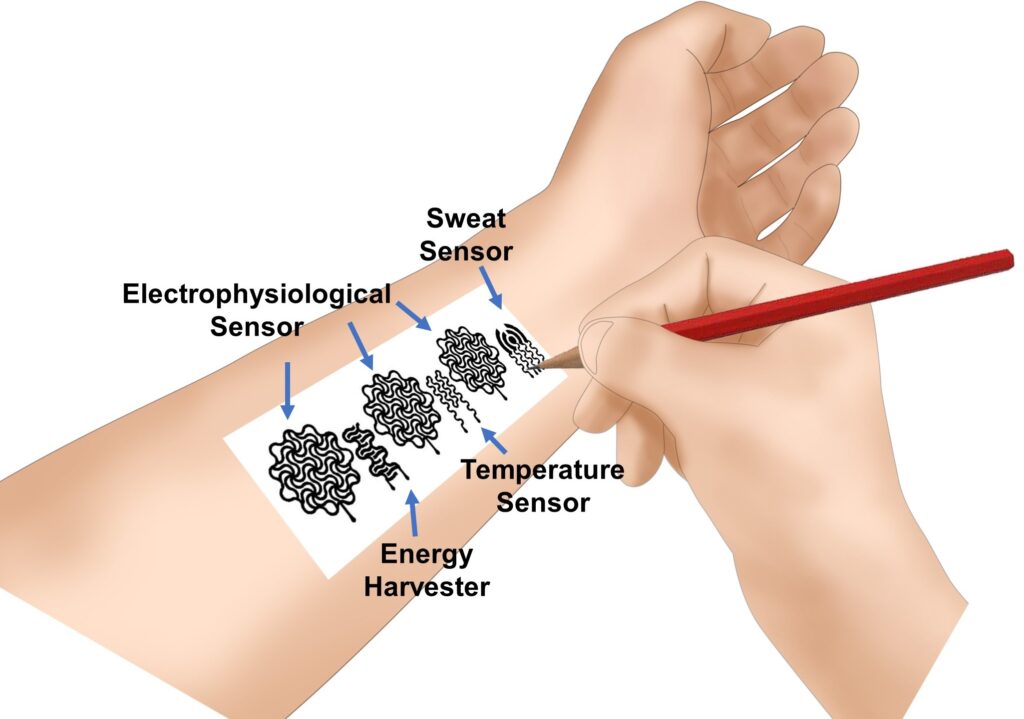An invention proposed by the University of Missouri can make wearable sensors accessible to everyone
Wearable sensor technology will be the new evolution of medicine. The technologies developed so far have proven to be very efficient and capable of covering a wide range of needs. However, the technologies used so far are often expensive and difficult to produce. A solution may come from the study proposed by the University of Missouri. The full results have been published in the journal Proceedings of the National Academy of Sciences.
You might also be interested in —> Taopatch, the sensor that improves mind and body
The researchers have shown that a highly functional device can be obtained simply with graphite pencils and office paper. The resulting sensor is capable of measuring temperature, electrocardiogram, pH and other parameters. The pencils to be used must contain at least 90% graphite in order to conduct sufficient electricity. The researchers say the technology is so easy to use that patients can draw the sensors on paper themselves and apply them at home.
You might also be interested in —> Kailo, the innovative tool for pain relief
“The conventional approach for developing an on-skin biomedical electronic device is usually complex and often expensive to produce,” said Zheng Yan, an assistant professor in the College of Engineering. “In contrast, our approach is low-cost and very simple. We can make a similar device using widely available pencils and paper.” The benefits are the low cost, the incredible accessibility, the low environmental impact and the ability to be applied in special cases, such as the pandemic caused by CoVID-19.
